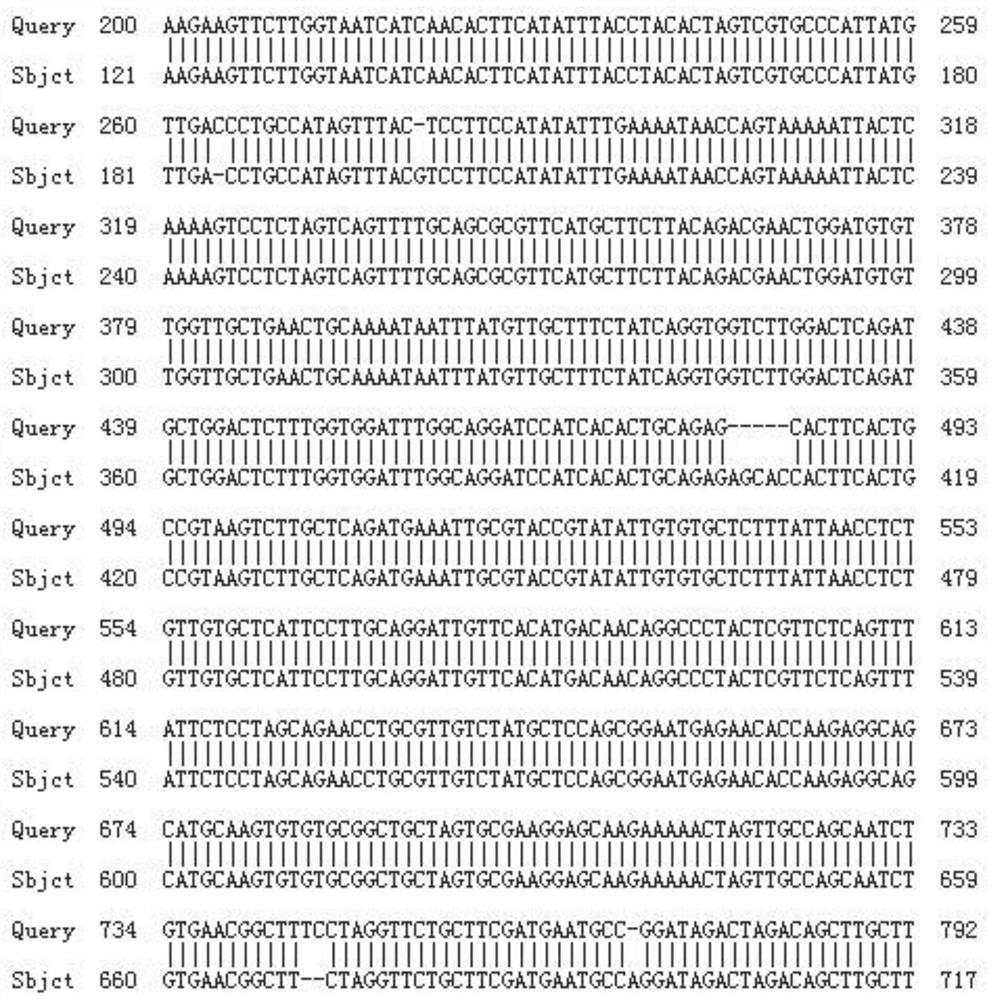A molecular marker, primer and application thereof tightly linked to rice high resistant starch content gene sbe3-rs
A high-resistant starch, molecular marker technology, applied in biochemical equipment and methods, microbial determination/inspection, DNA/RNA fragments, etc., can solve the problems of long breeding cycle and low selection efficiency, reduce labor space, The effect of shortening the breeding cycle and improving the breeding efficiency
- Summary
- Abstract
- Description
- Claims
- Application Information
AI Technical Summary
Problems solved by technology
Method used
Image
Examples
Embodiment 1
[0024] Obtaining the nucleotide sequence shown in SEQ ID NO: 3 and the nucleotide sequence shown in SEQ ID NO: 4 by the special primer pair for character identification of the highly resistant starch mutant gene sbe3-rs
[0025] 1.1 Parental Genome Amplification
[0026] The parents used to create the rice recombinant inbred line (RIL) population were Jiangtangdao 1 No. 4 and FD1710 bred by Anhui Fengda Seed Industry Co., Ltd., respectively. FD1710 is the female parent, which does not contain the high resistant starch mutant gene sbe3-rs; Jiangtangdao 1 is the male parent, which contains the high resistant starch mutant gene sbe3-rs.
[0027] Using the CTAB method to extract the genomic DNA of the leaves of the parents, the primer pair was designed with the sbe3-rs sequence (web site) published on the NCBI, and the nucleotide sequence shown in SEQ ID NO: 5 and the nucleotide shown in SEQ ID NO: 6 Composed of acid sequences, entrusted to Beijing Zixi Biological Company to synt...
Embodiment 2
[0035] Correlation verification between the amplified product of QK1 and the traits of high resistant starch content in rice
[0036] Using Jiangtangdao 1 containing the high resistant starch mutant gene sbe3-rs and FD1710 without the resistant starch mutant gene sbe3-rs as parents, 285 F 2 The substitute material is the test object. Genomic DNA was extracted from the rice to be tested by the alkaline cooking method, and the specific steps were the same as in Example 1. PCR amplification experiments were performed with QK1. The reaction system of PCR amplification is: 10X Buffer 2μl (containing Mg 2+ ), dNTP 0.4 μ l (10 mM), the nucleotide sequence shown in SEQ ID NO: 3 and the nucleotide sequence shown in SEQ ID NO: 4 each 2 μ l (5 μ M), the genomic DNA 1 μ l that the rice to be tested extracts, taq enzyme 0.5μl (5U / μl), the reaction volume is 20μl, drop a drop of mineral oil to cover; the reaction program of PCR amplification is: 94°C 5min; 94°C 60s, 53.5°C 60s, 72°C 60s,...
PUM
 Login to View More
Login to View More Abstract
Description
Claims
Application Information
 Login to View More
Login to View More - R&D
- Intellectual Property
- Life Sciences
- Materials
- Tech Scout
- Unparalleled Data Quality
- Higher Quality Content
- 60% Fewer Hallucinations
Browse by: Latest US Patents, China's latest patents, Technical Efficacy Thesaurus, Application Domain, Technology Topic, Popular Technical Reports.
© 2025 PatSnap. All rights reserved.Legal|Privacy policy|Modern Slavery Act Transparency Statement|Sitemap|About US| Contact US: help@patsnap.com



